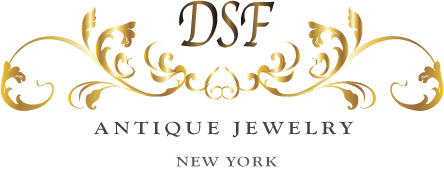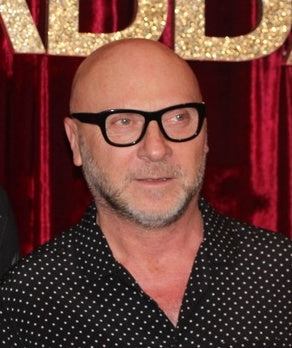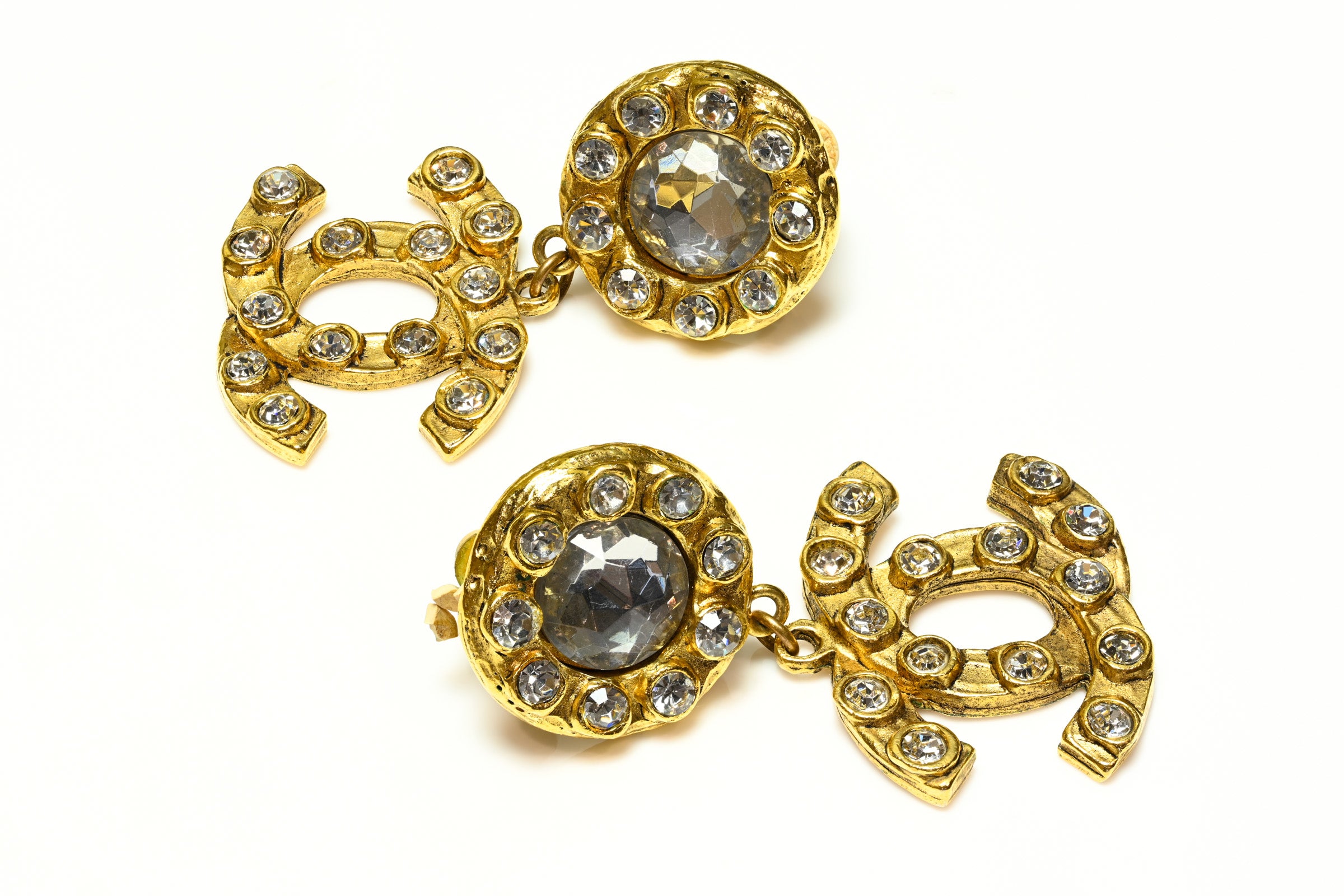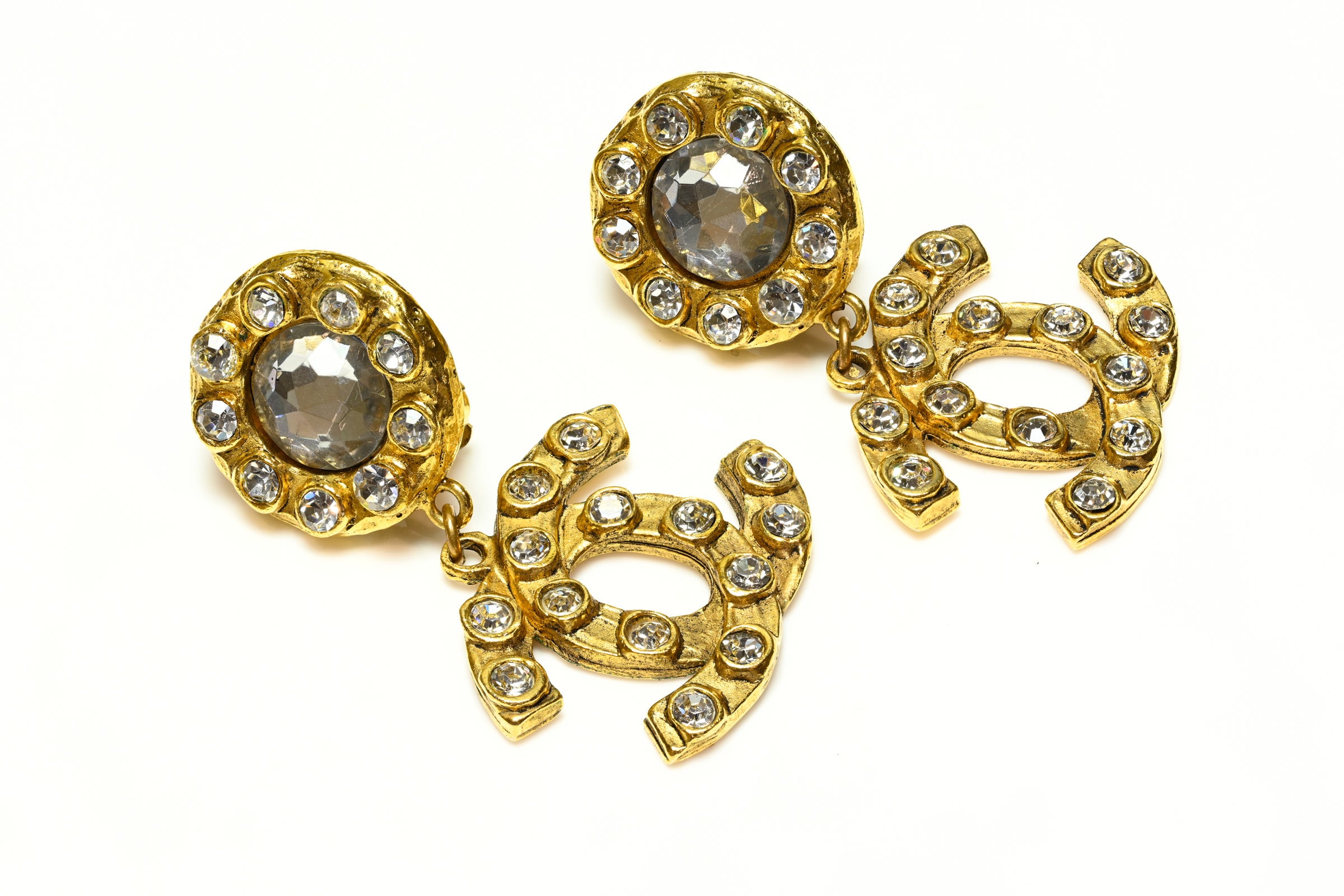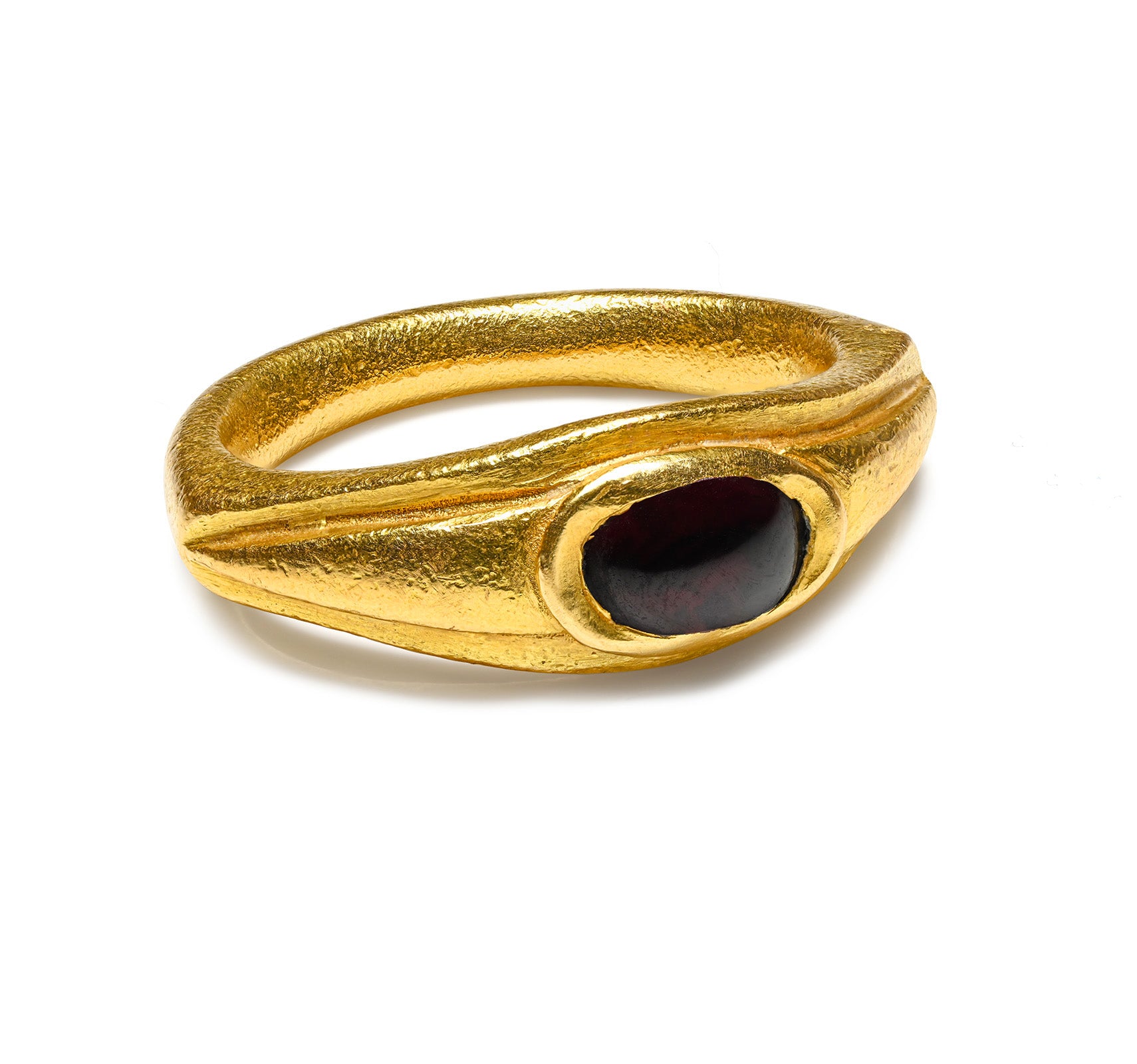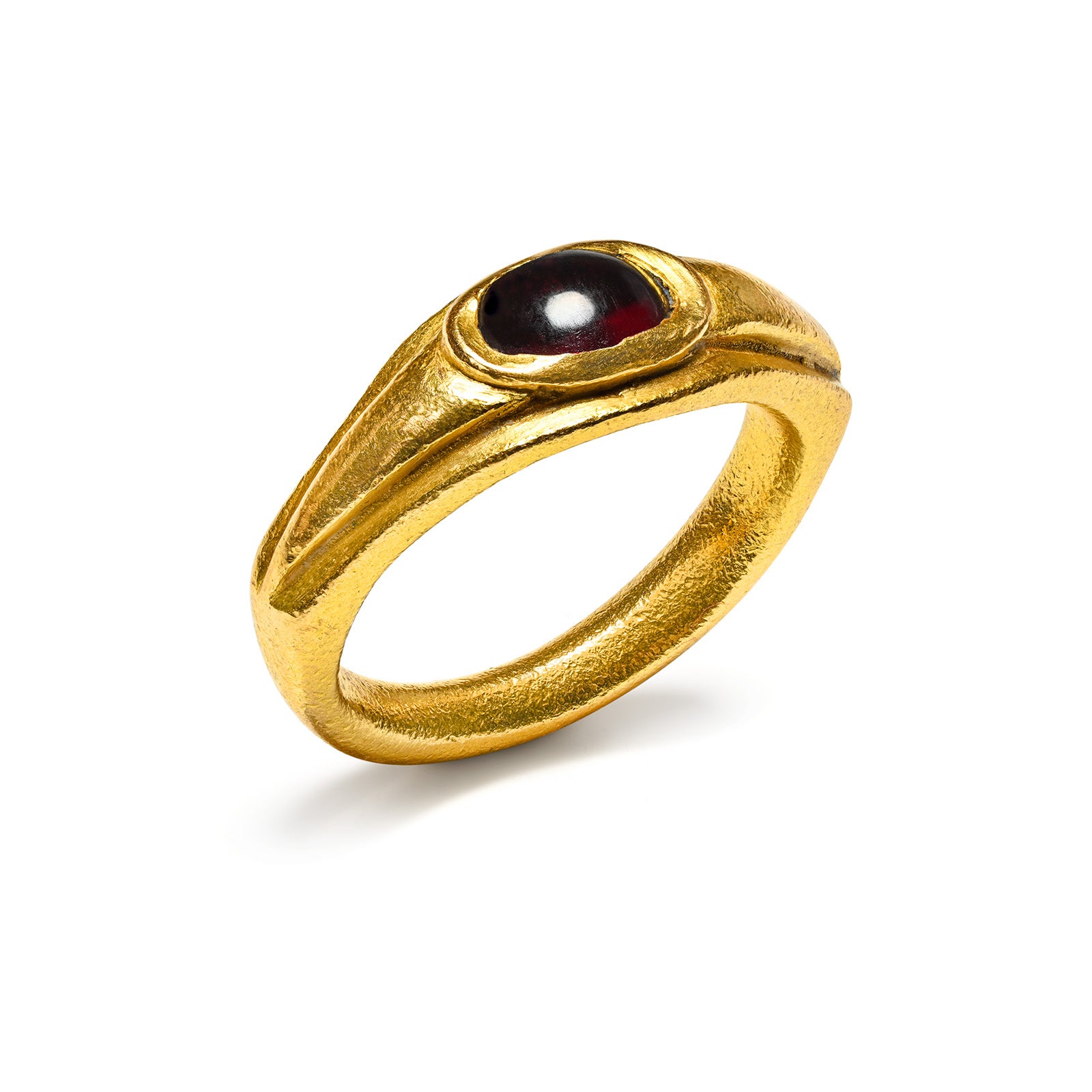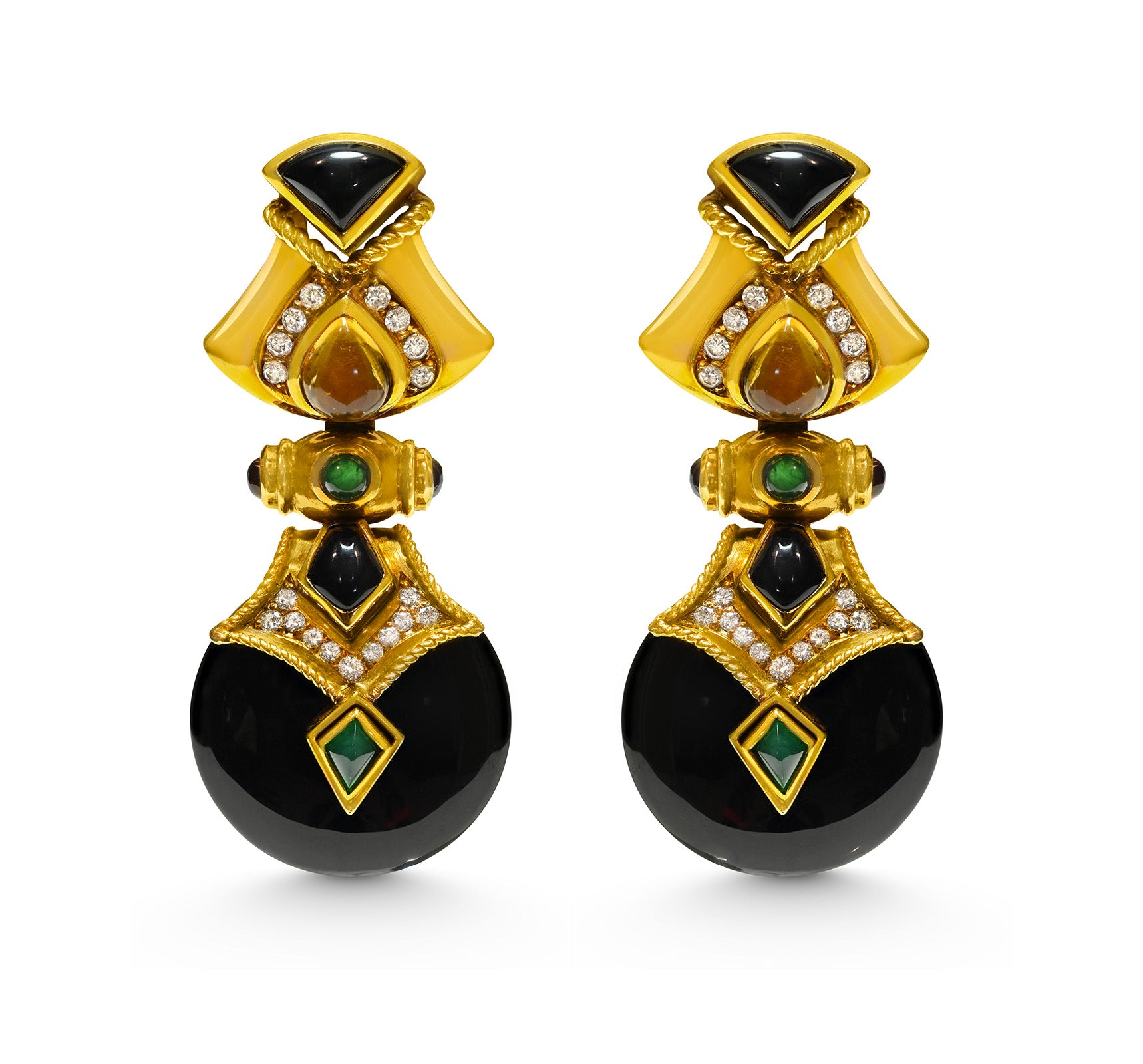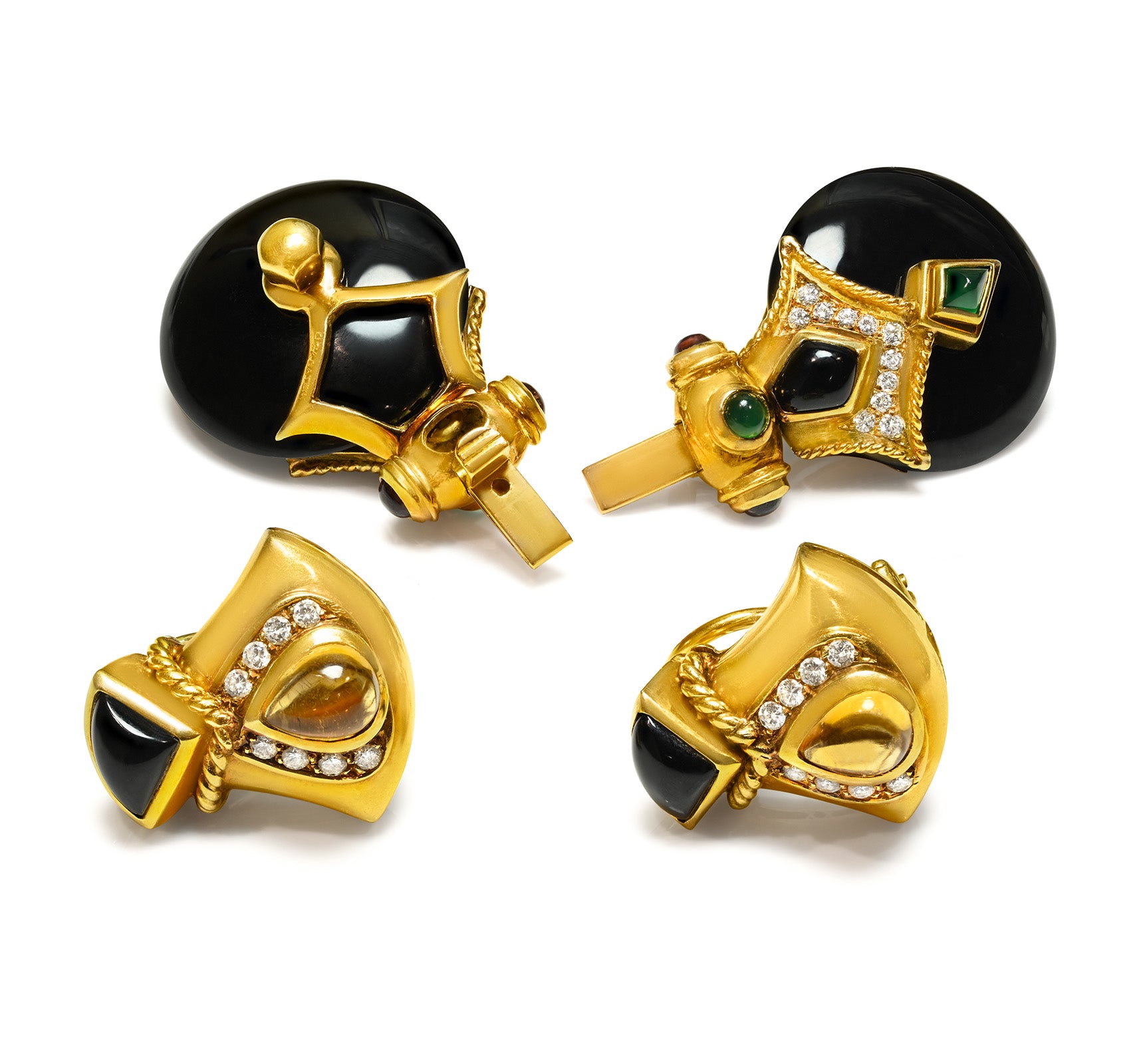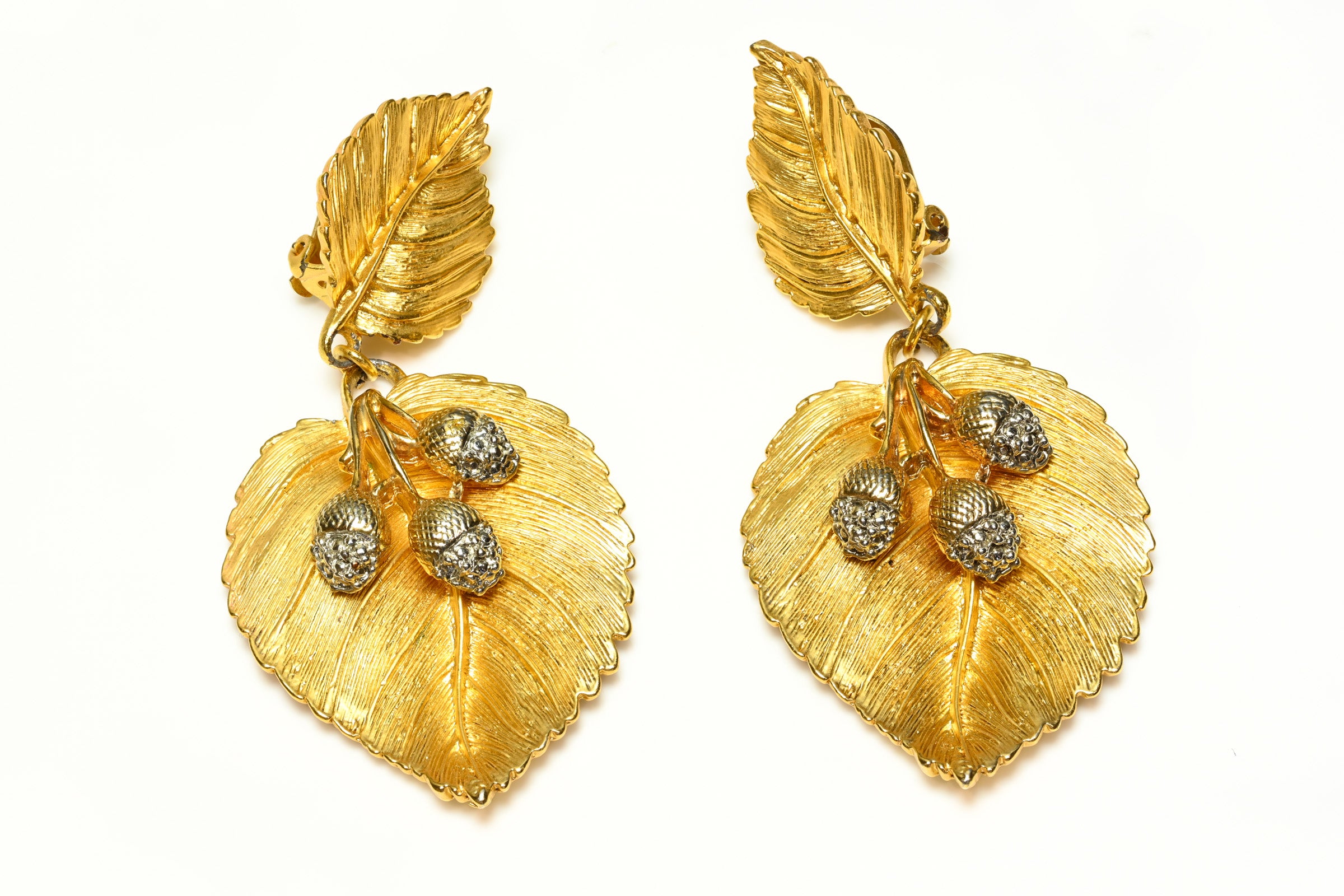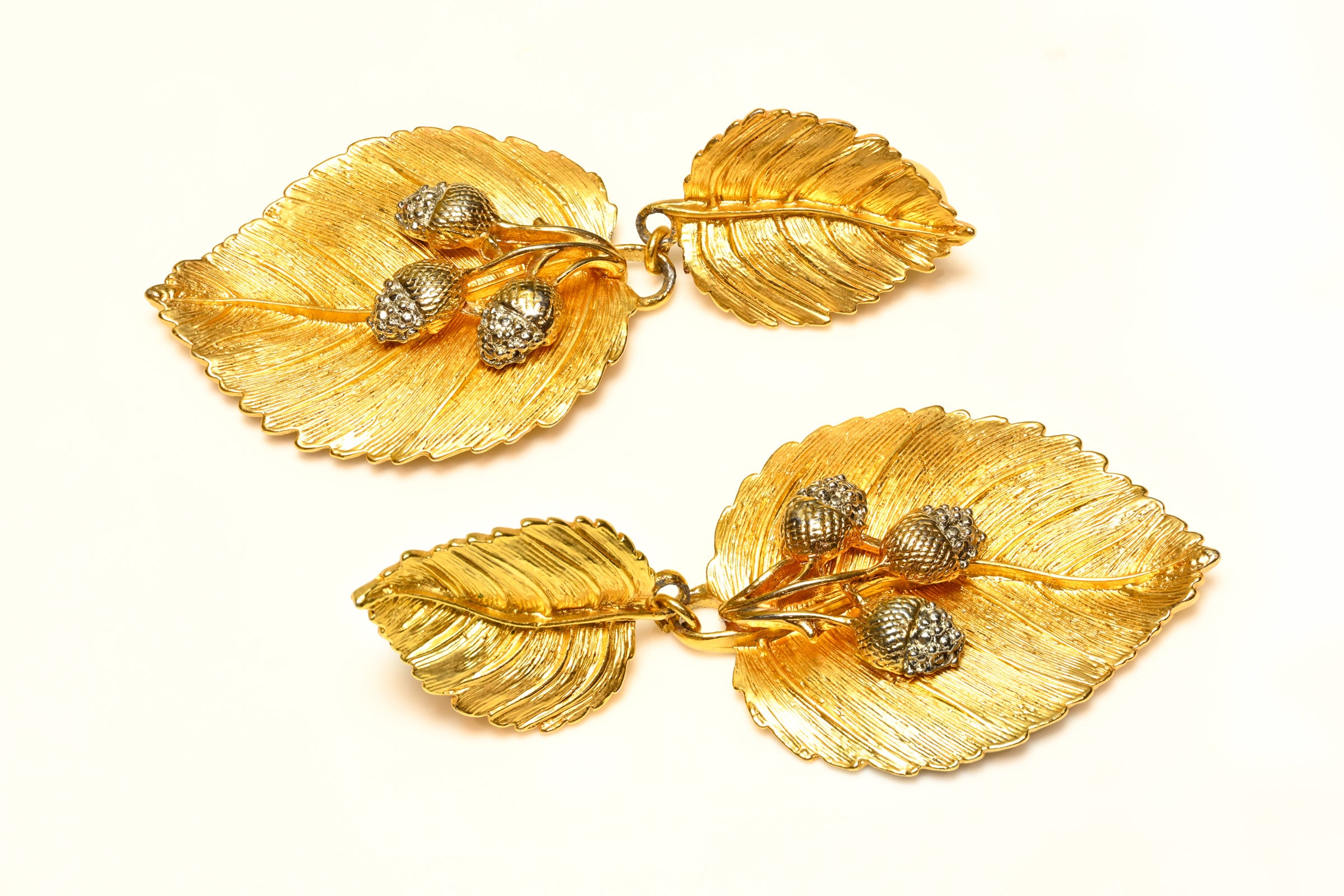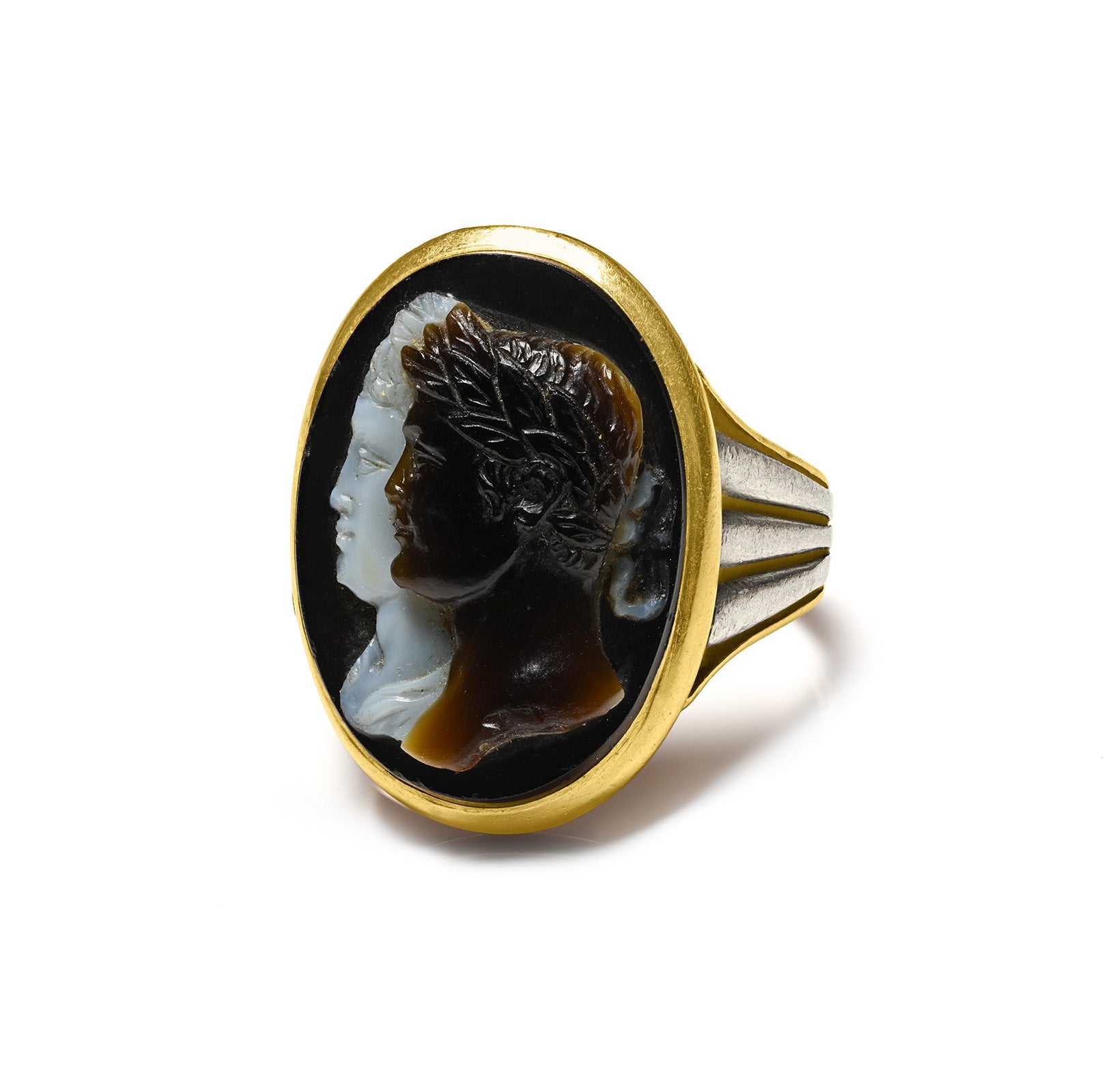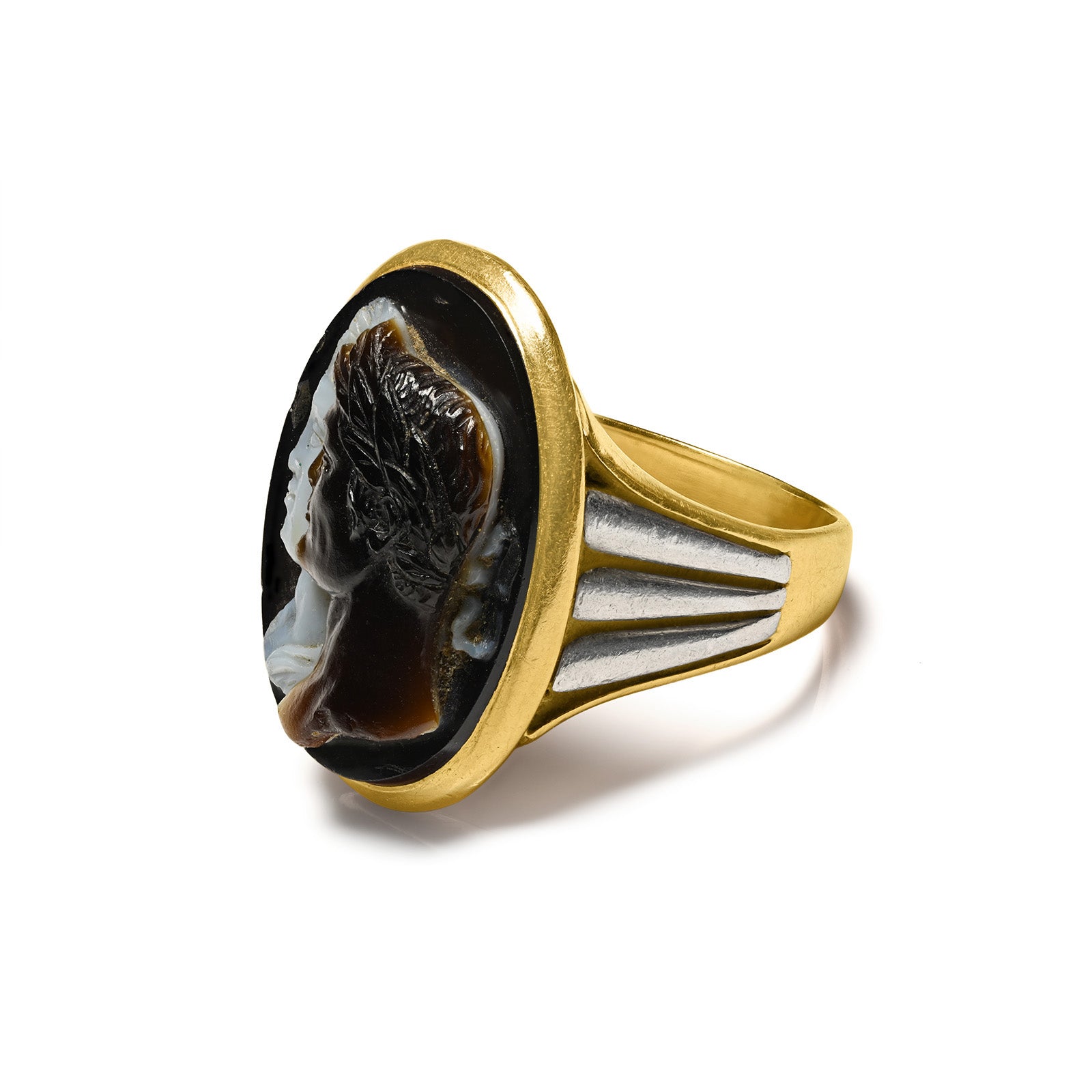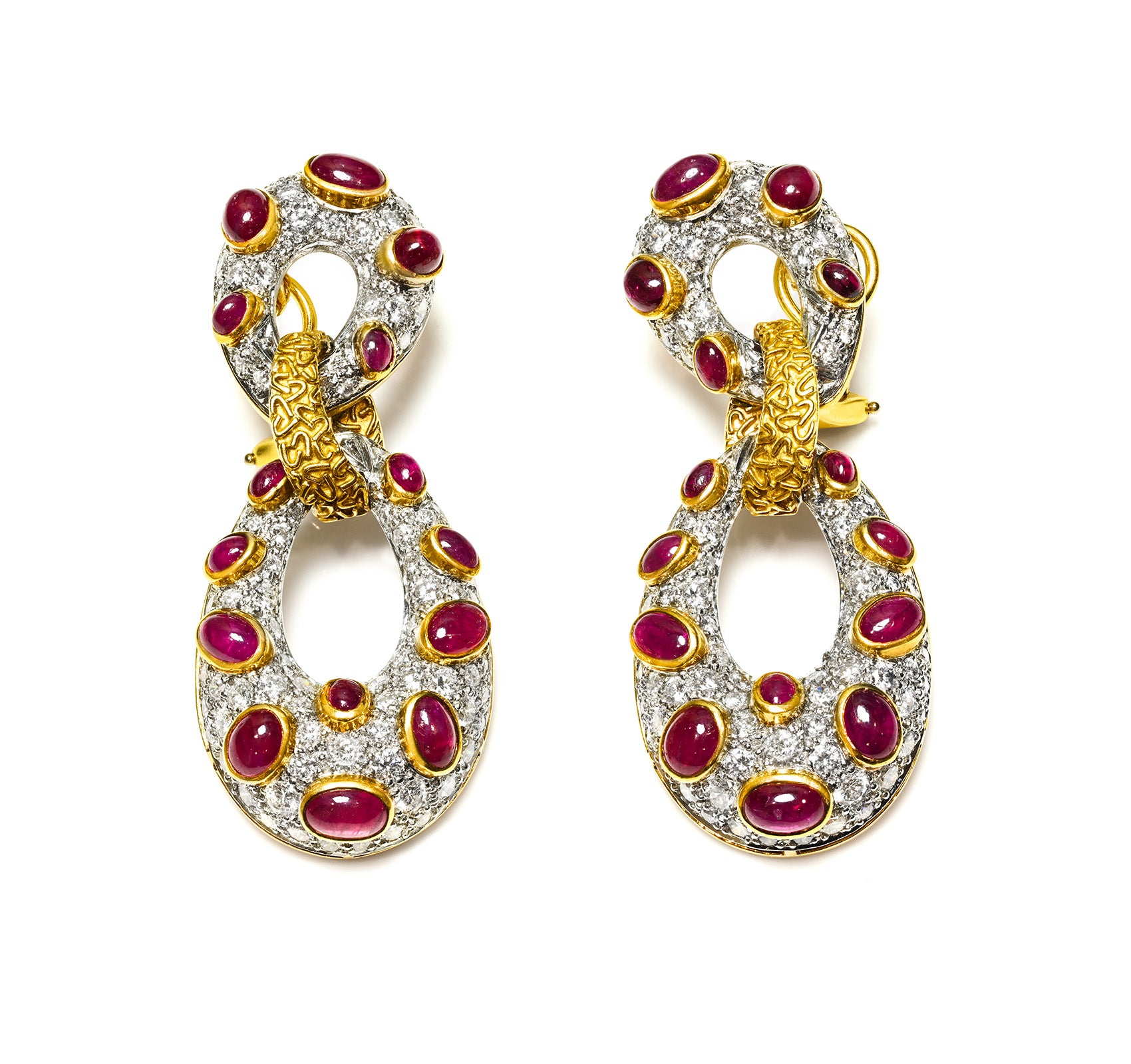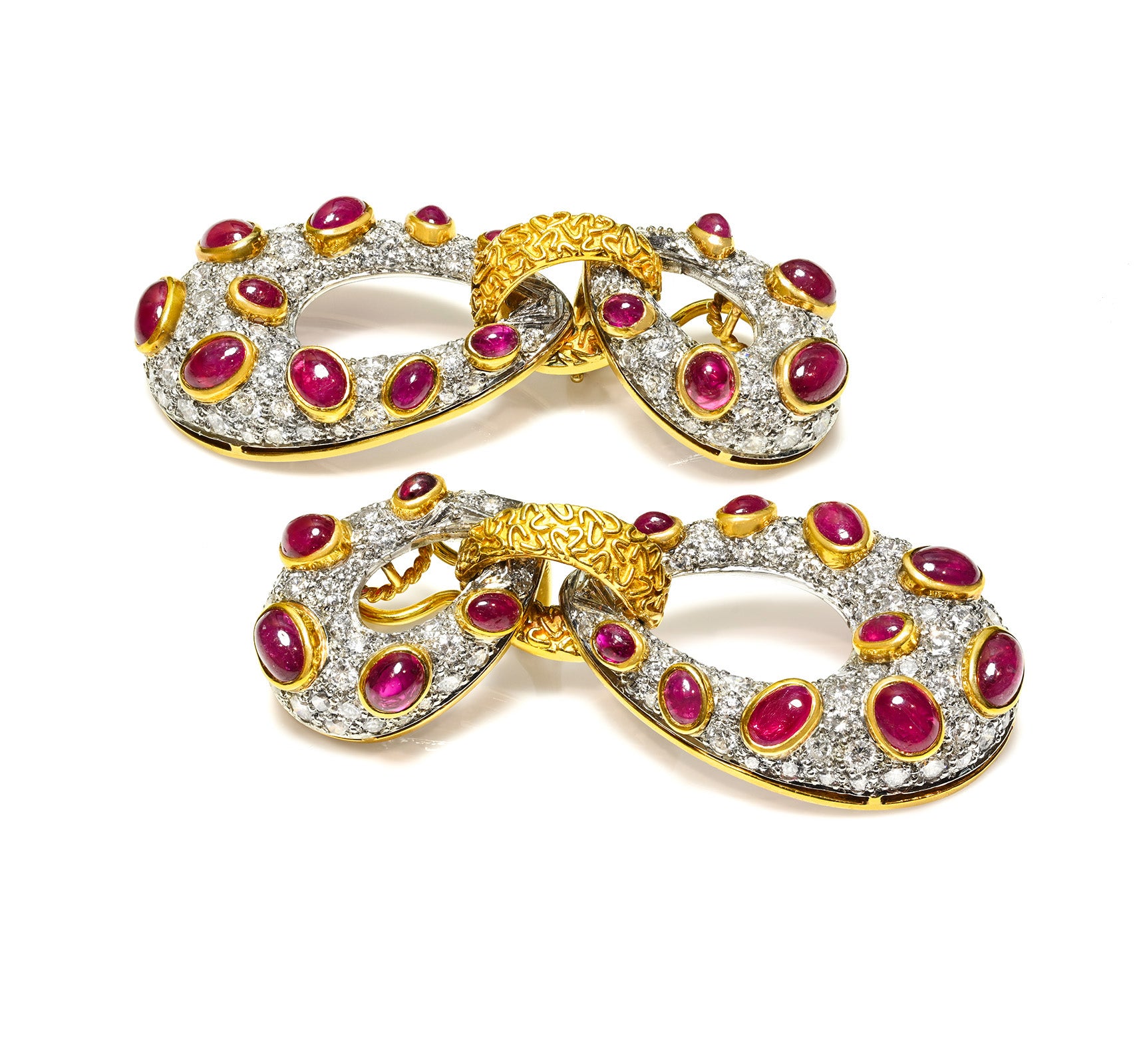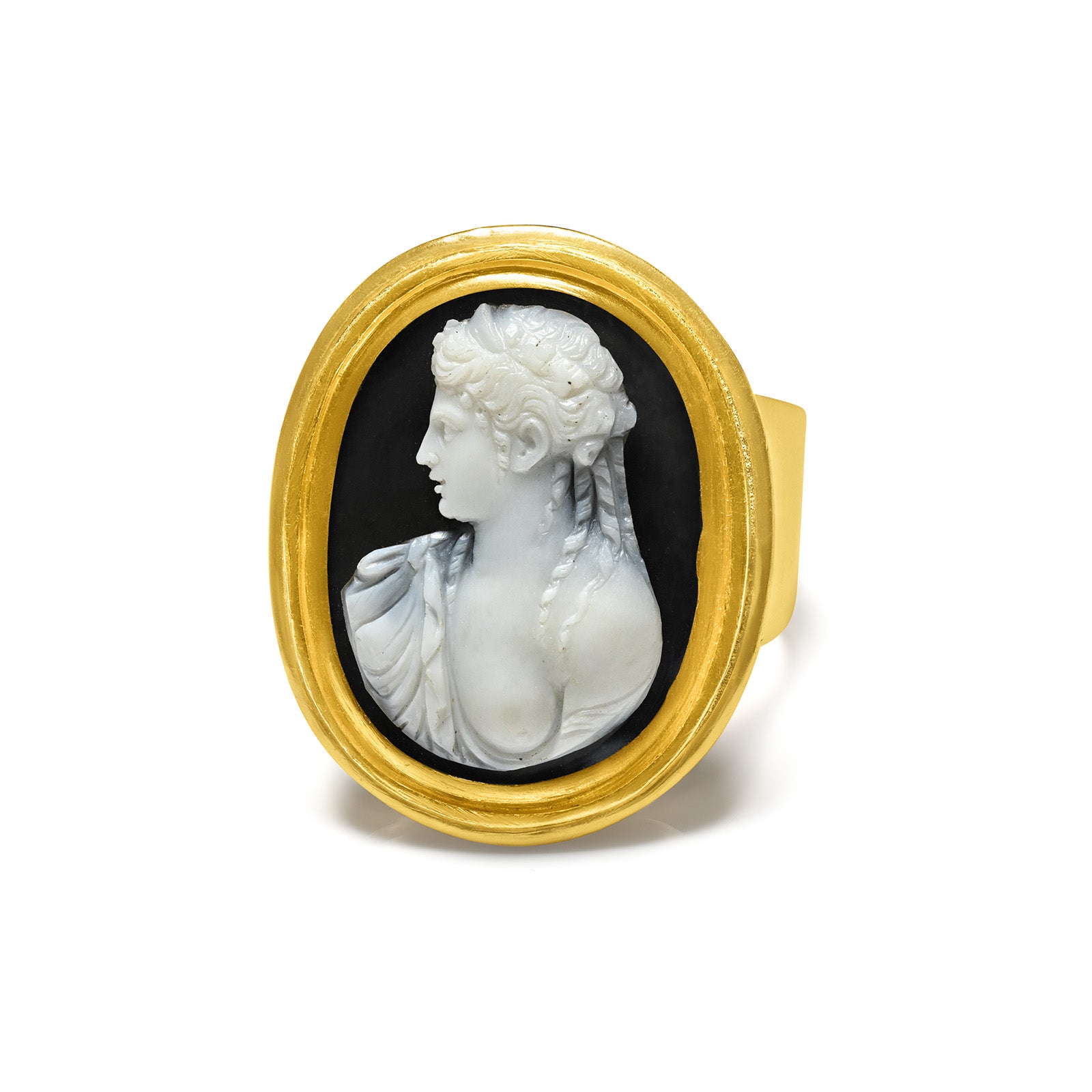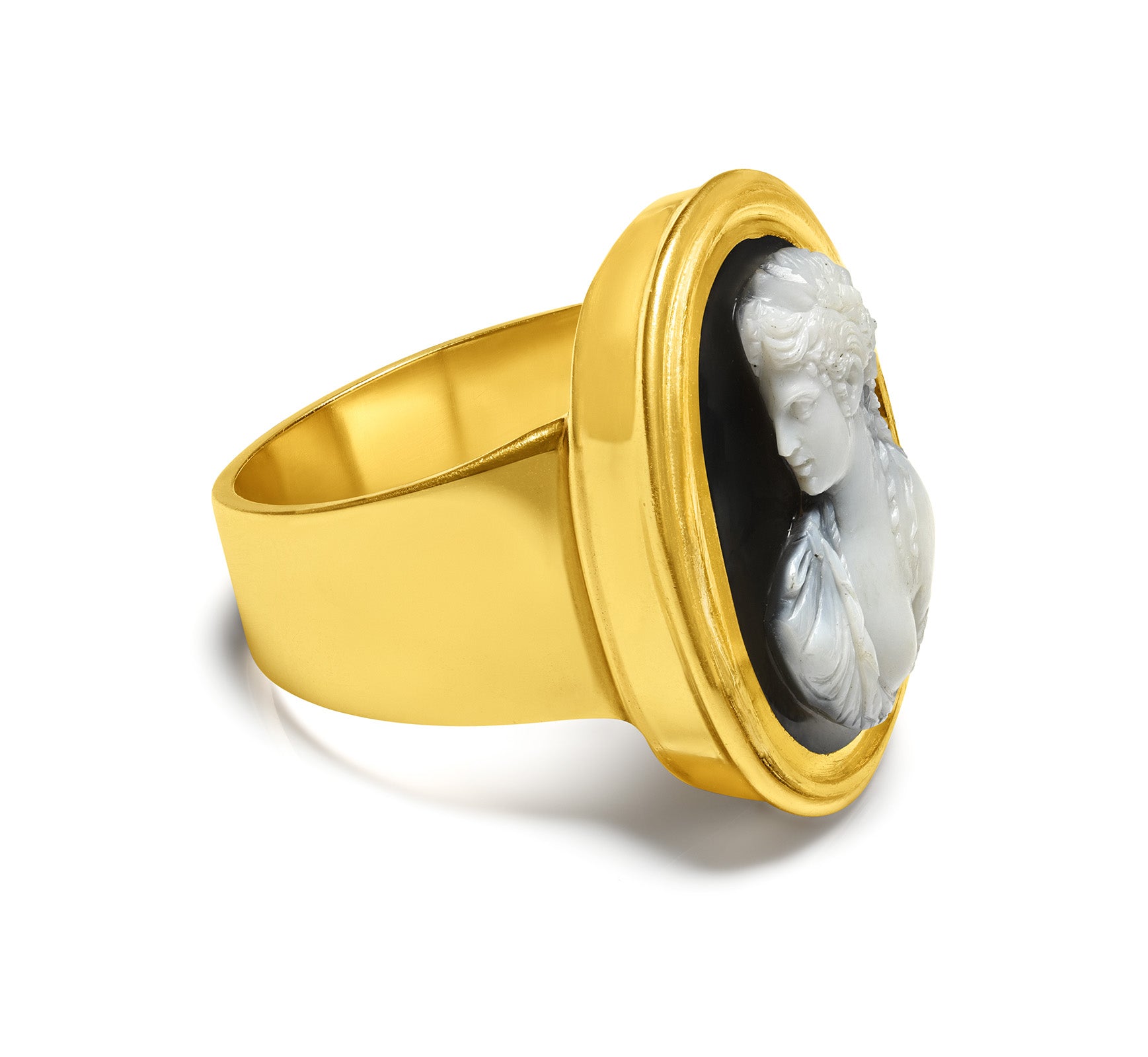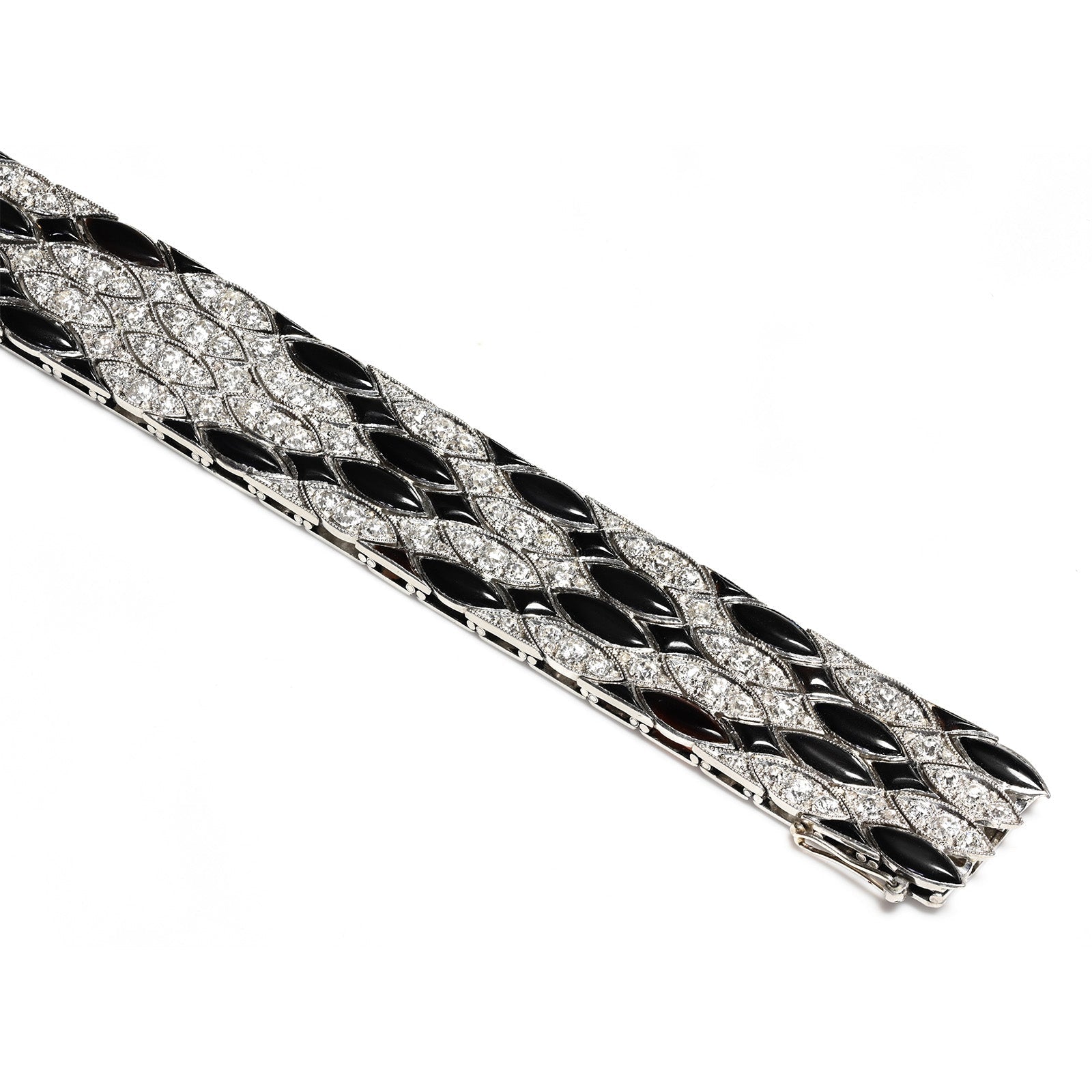
La Belle Époque: The Golden Age of Elegance and Jewelry
La Belle Époque is widely regarded as Europe's golden era, a time of peace, affluence, and artistic brilliance that shaped the course of history.
This period, spanning from the late 19th century until the outbreak of World War I in 1914, saw remarkable advancements in culture, fashion, and craftsmanship.
Jewelry, in particular, flourished during this era, reflecting the elegance and optimism of the time.

Art Nouveau 18K Gold Sapphire Gemstone Briolette Necklace Pendant Attrib. F. Walter Lawrence/Gustav Manz - DSF Antique Jewelry
Jewelry in the Belle Époque Era: A Fusion of Craft and Innovation
Jewelry from La Belle Époque was crafted with both traditional handcrafting techniques and new industrial methods.
While mechanization allowed for greater production, the Arts & Crafts movement emerged as a response, emphasizing the beauty of handmade artistry.
This movement championed labor-intensive techniques, making its jewelry rare and exceptionally valuable, setting it apart from mass-produced pieces of the time.

Antique Belle Epoque Platinum Diamond and Onyx Bracelet - DSF Antique Jewelry5
La Belle Époque: A Cultural Renaissance
La Belle Époque (French for "The Beautiful Era") emerged as a golden dream of transformation, fueled by the ambitious vision of Napoleon III and Baron Haussmann, who reimagined Paris as a city of grandeur and modernity.
According to American fashion editor Diana Vreeland, who wrote the preface to Phillipe Jullian’s 1982 essay "La Belle Époque", this period was born from a fusion of romantic nostalgia and groundbreaking urban renewal.
Historians typically place its beginning after France's loss in the Franco-Prussian War (1871). In parallel, other nations also entered a period of peace and stability, fostering a sense of progress and refinement.
Despite its prosperity and cultural richness, World War I in 1914 marked the abrupt end of this flourishing era.
However, its influence endured across nations, known as:
- "The Gilded Age" in the United States
- "The Restoration" in Spain
- "Pax Britannica" in England
With its newly transformed avenues and architectural marvels, Paris became the epicenter of global attention, hosting two World Fairs and unveiling iconic landmarks like the Grand Palais and the Eiffel Tower, according to Wikipedia.
Yet, the true heart of elegance resided in the legendary Place Vendôme, home to the world’s most prestigious jewelers, including:
These high-society women, often the wives or courtesans of royalty and industrial magnates, dictated fashion and luxury trends. They were lavished with diamonds, pearls, and elaborate jewelry, defining the opulence of the Belle Époque style.
By the late 19th century, Hollywood stars had begun to supersede European aristocracy as the new cultural icons, influencing fashion, jewelry, and lifestyle.

Le Château d'eau and plaza, Exposition Universal, 1900, Paris, France via Wikimedia Commons
Beyond Glamour: A Time of Social Change & Progress
"Myth has replaced history to such a degree that the words ‘La Belle Époque’ immediately conjure up a music-hall scene," wrote Phillipe Jullian, stressing that this period should be examined in both its historical and legendary context.
While often remembered for its grandeur and prosperity, La Belle Époque was also a time of groundbreaking societal advancements, including:
- Improved living conditions and expanding social reforms
- The rise of modern mass media
- Revolutionary scientific discoveries that shaped the 20th century
This era witnessed the emergence of modern political ideologies, such as:
- The British Labour Party (reformist socialism)
- The German Social Democratic Party (revisionist socialism)
- The Russian Bolsheviks (radical socialism)
In England, the suffragette movement led by Emmeline Pankhurst championed women’s political rights, advocating fiercely for the right to vote and gender equality.
La Belle Époque was not just an age of luxury and aesthetic refinement—it was an era that laid the foundation for the modern world.

Belle Epoque Old Mine Cut Diamond Bird Brooch - DSF Antique Jewelry
The Jewelry of La Belle Époque: A Reflection of Elegance and Innovation
The Rise of Luxury and Ornamentation The Second Industrial Revolution, along with modern electricity and new manufacturing techniques, led to unprecedented economic growth in Western society.
This prosperity gave rise to the bourgeoisie and nouveau riche, whose extravagant lifestyles set the tone for the luxurious aesthetic of La Belle Époque.
In cities across Europe, lavish soirées, receptions, and cultural gatherings were at the heart of elite social life, and jewelry became an essential status symbol.
Jewelry of the era was defined by grace, delicacy, and intricate craftsmanship. The dominant styles included:
- Garlands and swags of foliate designs
- Lace and ribbon motifs, reflecting the Rococo and Neoclassical aesthetics of 18th-century France
- Bows and floral ornaments, evoking a sense of romance and femininity
La Belle Époque saw the intersection of multiple artistic movements, including:
-
Edwardian jewelry design (characterized by platinum, diamonds, and airy, lace-like patterns)
- Art Nouveau (featuring sinuous lines, nature-inspired motifs, and enamel work)
- The Arts and Crafts Movement (emphasizing handcrafted, simplistic jewelry)
This era was a celebration of beauty and craftsmanship, but it was also one of contrasts—between tradition and innovation, handcrafted artistry and mass production, refinement and excess.

Belle Epoch 18K Gold Sugarloaf Emerald Diamond Men's Ring - DSF Antique Jewelry
The Arts and Crafts Movement: A Return to Handcrafted Elegance
As industrialization rapidly advanced, the Arts and Crafts Movement (1880-1920) emerged as a reaction against mass production.
This movement sought to revive artisanal craftsmanship, placing emphasis on handmade jewelry with unique designs rather than machine-made, repetitive patterns.
Key Features of Arts and Crafts Jewelry:
- Handcrafted designs, rejecting industrial techniques
- Use of enamel, semi-precious stones, silver, and non-precious metals
- Simple, naturalistic motifs rather than ostentatious displays of wealth
- Influences from Gothic, Renaissance Revival, Art Nouveau, and Japanism
Despite its artistry, this return to the past clashed with the era's taste for opulence. The nouveau riche favored extravagant gemstones and elaborate craftsmanship, leaving Arts and Crafts jewelry relatively unpopular at the time.
However, today, collectors highly prize these unique, handcrafted pieces, recognizing their artistic and historical significance.

Christian Dior Paris by Max Muller Belle Epoque Style Earrings - DSF Antique Jewelry
The Artistic Brilliance of Art Nouveau and Edwardian Jewelry
The Art Nouveau Movement: A Revolution in Design
Emerging as a response to industrialization, Art Nouveau (1895-1910) transformed jewelry design with asymmetrical patterns, flowing lines, and organic forms.
Unlike the rigid geometric precision of earlier styles, Nouveau emphasized movement and fluidity, drawing inspiration from nature, mythology, and the female form.
Key Features of Art Nouveau Jewelry:
- Graceful curves and elongated, flowing lines
- Mythological creatures, natural landscapes, and ethereal female figures
- Jewels crafted from gold, platinum, or silver
- Dreamy gemstones such as aquamarine, opal, and ivory
- Crystal glass finishes, evoking fantasy and fairy-tale imagery
However, what truly defined Art Nouveau jewelry was its enameling techniques, particularly:
- Plique-à-jour: A stained glass effect allowing light to pass through the enamel
- Cloisonné: Metal compartments filled with colorful enamel
- Basse-taille: A technique where transparent enamel was layered over an engraved metal surface
These innovative approaches created wearable works of art, infused with dreamlike qualities that blurred the boundaries between jewelry, sculpture, and painting.
The Edwardian Era: A Tribute to Elegance and Refinement
Marking the final jewelry era named after a British monarch, the Edwardian Era (1901–1910) coincided with the reign of King Edward VII, a ruler known for his opulent lifestyle and affinity for luxury.
Unlike the bold experimentation of Art Nouveau, Edwardian jewelry embraced delicate, aristocratic sophistication, often inspired by the Rococo and Neoclassical aesthetics of 18th-century French courts.
Key Features of Edwardian Jewelry:
- Intricate, lace-like designs, known as the "garland style"
- Motifs of bows, ribbons, wreaths, flowers, shamrocks, horseshoes, and crescent moons
- Use of platinum, prized for its durability and ability to create thin, refined settings
- Gemstones such as sapphires, pearls, and amethysts, adding a regal touch The strength of platinum played a crucial role in Edwardian craftsmanship, allowing jewelers to create exquisite, airy designs while securely holding gemstones in place.
Other popular materials included:
- Rolled gold and multicolored gold, offering subtle variations in tone
- Silver, which complemented platinum’s lacy brilliance Edwardian jewelry symbolized grace, romance, and aristocratic refinement, but its reign was tragically cut short.
With the outbreak of World War I in 1914, the world entered an era of uncertainty, marking the end of La Belle Époque’s romanticism.
However, the influences of this period lived on, shaping the glamorous masterpieces of the Roaring Twenties and the bold geometric designs of Art Deco.
Belle Epoque Gold Old Mine Cut Diamond Ring
The Exquisite Materials and Gem-Cutting Techniques of La Belle Époque
Materials Used in Jewelry
During La Belle Époque, jewelers had access to a wide array of metals, gemstones, and innovative techniques, leading to some of the most refined designs in history.
The most common materials used in jewelry from this era were:
-
Platinum: With the invention of the acetylene torch in 1903, platinum became the preferred metal for creating intricate, lace-like designs that were both strong and delicate.
-
White and Yellow Gold: Durable and timeless, yellow gold remained highly popular, while white gold offered a refined alternative.
-
Silver, Copper, and Aluminum: Primarily favored by Arts & Crafts jewelers for their unique, handcrafted aesthetic.
-
Rolled Gold and Multicolored Gold: Frequently employed by fine jewelry manufacturers to add color contrast and artistic depth.
- Japanese Enameling Techniques: Enameling played a significant role, especially in Art Nouveau jewelry, where it was used to create vivid, colorful effects.
As the French colonial empire expanded, global trade brought an unprecedented influx of rare gemstones into France, increasing the use of:
-
Rubies, Sapphires, and Emeralds – Sourced from Burma, Sri Lanka, and Colombia, these precious gems became centerpieces of high-end jewelry.
-
Fancy-Colored Diamonds – Pink, yellow, and blue diamonds were highly sought after for their romantic and ethereal qualities.
-
South African Diamonds – By the late 1860s, diamond mining in South Africa supplied high-quality stones, further popularizing diamond jewelry.
-
Semi-Precious Stones – Aquamarine, opal, and topaz were admired for their soft pastel hues, which complemented the delicate designs of the era.
- Natural Pearls – Still prized for their beauty, pearls were a staple of aristocratic jewelry. Cultured pearls from Japan were first being collected but wouldn't be widely available until 1921.
Other notable gem materials included:
- Moonstone – Known for its dreamy, mystical glow
- Chrysoberyl – Admired for its rare alexandrite variety, which changes color
- Peridot, Tourmaline, and Malachite – Favored for their rich greens and vibrant hues
- Amber, Tortoiseshell, and Horn – Frequently used for hair accessories and decorative jewelry
- Demantoid Garnet – A rare green variety from the Ural Mountains, often used in Russian Belle Époque jewelry
Gem-Cutting Styles of La Belle Époque
The art of gem-cutting during La Belle Époque was just as refined and sophisticated as the jewelry itself.
The era saw the widespread use of four distinct cuts, each contributing to the elegance and brilliance of the gemstones:
-
Rose Cut: Featuring a flat base and a dome-shaped crown, this antique cut maximized the soft glow of diamonds and colored gemstones.
-
Old Mine Cut: A predecessor of the modern brilliant cut, this shape was square with rounded corners, offering deep sparkle.
-
Old European Cut: The most advanced cut of the era, this round shape with a high crown and small table created exceptional fire and brilliance.
- Cabochon Cut: Unlike faceted stones, cabochons were polished into smooth, rounded surfaces, perfect for moonstone, opal, and chrysoberyl.
These cutting styles allowed jewelers to showcase the natural beauty of gemstones, giving La Belle Époque jewelry its timeless, radiant charm.

Belle Epoque 18K Gold Old Mine Cut Diamond Ring - DSF Antique Jewelry
The Exquisite Designs and Iconic Jewelry of La Belle Époque
Jewelry from the La Belle Époque era was a celebration of light, refinement, and craftsmanship, with designs that emphasized delicate, airy structures crafted from platinum and adorned with diamonds and natural pearls.
One of the most sought-after styles was the Résille design, which mimicked a fishnet pattern, allowing jewelers to highlight the intricacy of metalwork and the subtle play of light through diamonds.
Another defining technique was Millegrain, a delicate embellishment method where tiny metal beads were placed around gemstones, creating soft, intricate borders that gave a lace-like effect to jewelry.
The aesthetic of La Belle Époque jewelry was characterized by romanticism and femininity, heavily inspired by rococo, neoclassicism, and nature-inspired themes.

Antique 1900 Belle Époque Flower Bow Earrings - DSF Antique Jewelry
Popular Jewelry of La Belle Époque
Brooches
Brooches were a must-have accessory during this time. From gemstone-studded bar designs to intricate floral, bow, and garland motifs, these pieces ranged from minimalist to extravagant and were often worn on lapels, waistlines, or hats.
Tiaras & Hair Adornments
Tiaras were essential for balls and banquets, and their size and intricacy reflected social rank.
Thanks to the rise of luxury jewelry houses like Cartier and Van Cleef & Arpels, the nouveau riche and European aristocracy indulged in dazzling diamond and pearl-studded tiaras.
Alongside tiaras, hair decorations such as feathers, gem-encrusted hairpins, and combs were worn to complement updos, making elaborate hairstyles a signature of the era.
Stomachers (Grand Bodice Ornaments)
Originally designed to adorn the center panel of formal dresses, stomachers evolved into grand decorative pieces, often crafted from silver, platinum, or gold and encrusted with diamonds and pearls.
Like tiaras, stomachers were a symbol of social prestige and were frequently included in a matching jewelry parure (set).
Choker Necklaces ("Colliers de Chien")
One of the most iconic pieces of Belle Époque jewelry, choker necklaces—often referred to as "dog collars" (Colliers de Chien)—were intricately designed with pearls, diamonds, and lace-like motifs.
Queen Alexandra of England, who famously wore multi-strand pearl chokers to conceal a neck scar, helped cement this style’s popularity.
Festoon Necklaces
These draped, multi-layered necklaces extended the choker’s delicate decoration down to the chest, often resembling garlands, wreaths, or even spiderwebs.
Crafted in platinum or gold, they were adorned with diamonds, pearls, and colored gemstones, making them one of the most elegant and intricate jewelry styles of the era.
Earrings
With the invention of screw-back earrings in 1894, women could wear elaborate, lightweight pendant earrings without the need for pierced ears.
These earrings often featured dangling diamonds, pearls, and filigree metalwork, replacing the small pearl or diamond studs of previous decades.
Rings
Rings were essential accessories, and the most coveted combination of the era was platinum and diamonds. Sapphire, pearl, and ruby rings were also highly fashionable, often showcasing millegrain detailing and delicate reeded or scroll-engraved galleries.
Legacy of La Belle Époque Jewelry
The graceful aesthetics and superior craftsmanship of this period continued to influence Art Deco jewelry, which emerged in the 1920s. The romantic, refined motifs of La Belle Époque remain timeless, making its jewelry some of the most highly prized by collectors today.
Paris, a city brimming with unprecedented wealth and cultural brilliance, was at the very heart of La Belle Époque's splendor. From the newly completed Eiffel Tower to the breathtaking works of Impressionist painters, this era celebrated artistic and architectural marvels, defining a golden age of elegance.
Yet, despite its romanticized image, the origins of La Belle Époque were far from idyllic. Beneath the dazzling façade of wealth and creativity, societal disparities persisted, and the era's opulence was soon brought to an abrupt halt by the catastrophe of World War I.
The Fall of an Era
As war engulfed Europe, the extravagant parties, glittering jewels, and carefree luxury that defined La Belle Époque suddenly felt irrelevant.
Lavish celebrations were replaced by uncertainty, and flaunting diamonds no longer held significance as families desperately hoped for their young men to return from the battlefield.
The romantic euphoria of the era collapsed under the weight of global conflict, signaling the end of an unparalleled period of artistic and cultural evolution.
A Lasting Influence on Jewelry Design
Although the golden age of Belle Époque jewelry came to an end, its graceful aesthetic and refined craftsmanship laid the foundation for future jewelry traditions.
The influence of this period can be seen in the Art Deco movement of the 1920s, where jewelers modernized Belle Époque motifs with bolder geometric designs.
Even today, contemporary jewelers pay homage to the elegance of Belle Époque jewelry, drawing inspiration from its delicate floral motifs, garland designs, and lace-like platinum craftsmanship.

Belle Epoque Cartier Enamel Diamond Belt Buckle - DSF Antique Jewelry
Rarity and Collector’s Value
Because La Belle Époque jewelry was produced in small quantities during this brief yet influential period, authentic pieces are now highly sought after by antique collectors worldwide.
Their delicate refinement, intricate metalwork, and historical significance make them treasures of exceptional value.
However, due to their age and fragile craftsmanship, many Belle Époque jewelry pieces are displayed as collectibles rather than worn, preserving their delicate beauty for generations to come.
The legacy of La Belle Époque jewelry endures, serving as a reminder of an era defined by artistic triumphs, luxurious grandeur, and fleeting elegance.
